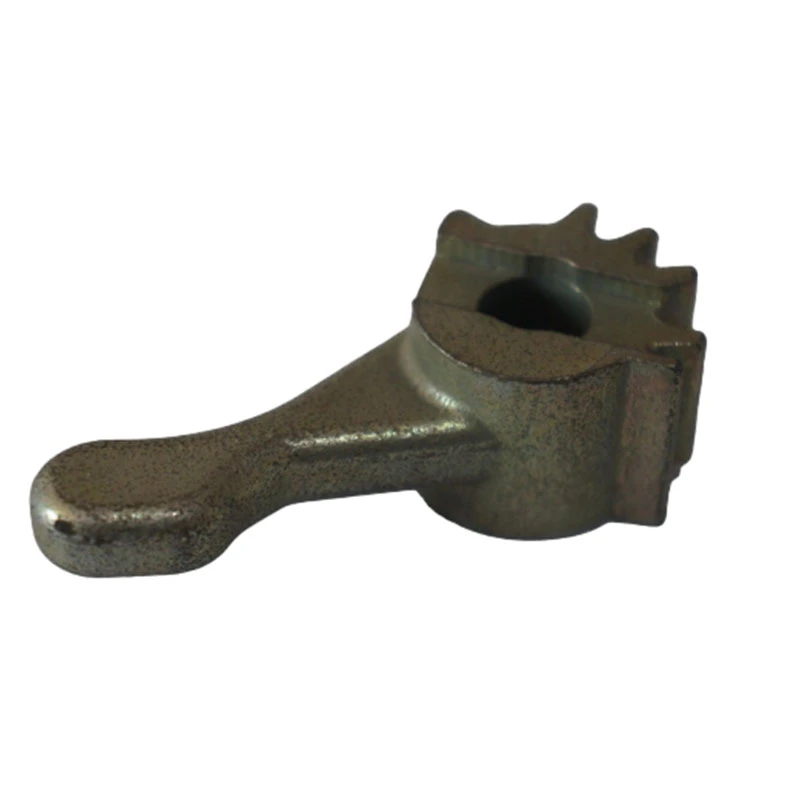Enhancing Precision in Sand Casting Techniques for Superior Manufacturing Results
Precision Sand Casting An Overview
Precision sand casting is a widely used manufacturing process that offers a versatile and cost-effective method for producing metal components with high precision and complex geometries. This technique plays a significant role in various industries, including automotive, aerospace, and machinery, where precision and quality are paramount.
The Sand Casting Process
The sand casting process begins with creating a pattern, which is typically made from metal or a durable plastic material. This pattern serves as a blueprint for the final product. The pattern is embedded in a mixture of sand and a binding agent to form the mold. The mold is then allowed to set, creating a cavity in the shape of the desired part.
Once the mold is prepared, it's filled with molten metal, which can be aluminum, iron, steel, or other alloys, depending on the application. The choice of metal is crucial, as it influences the casting's properties, such as strength, weight, and corrosion resistance. After pouring the molten metal into the mold cavity, it is allowed to cool and solidify. Once the metal has cooled sufficiently, the sand mold is broken apart to reveal the cast component.
Advantages of Precision Sand Casting
1. Complex Geometries One of the primary advantages of precision sand casting is its ability to produce intricate shapes that would be difficult or impossible to achieve through other manufacturing processes. This flexibility allows engineers and designers to innovate and create parts with complex internal structures.
2. Low Cost and Material Efficiency Sand casting is a relatively low-cost method, especially for low to medium-volume production runs. The reusable nature of sand as a mold material also contributes to its cost-effectiveness. Additionally, the ability to recycle sand reduces waste and is environmentally friendly.
3. Good Surface Finish Advances in sand casting techniques, such as the use of finer sand grains and improved binding agents, allow for high surface finish quality. While the surface finish may not match that of machining processes, it is often sufficient for many applications without the need for additional processing.
4. Versatility in Materials Sand casting can accommodate a wide range of materials, including ferrous and non-ferrous alloys. This versatility enables manufacturers to select the most appropriate metal for their requirements, balancing performance characteristics with cost.
precision sand casting

5. Scalability Precision sand casting can cater to both small batches and large-scale production. Once mold designs are finalized, they can be replicated efficiently, allowing for consistent production runs.
Applications of Precision Sand Casting
Precision sand casting is utilized across various sectors. In the automotive industry, it is commonly used to produce engine blocks, transmission cases, and other critical components where durability and precision are essential. The aerospace sector also relies heavily on sand casting to manufacture complex parts that need to withstand extreme conditions, such as turbine housings and brackets.
Additionally, the machinery industry often employs precision sand casting to create various components, including gears and housings, where dimensional accuracy and material strength are crucial. Other industries, including medical devices and consumer goods, are beginning to recognize the advantages of sand casting for producing specialized components.
Challenges and Considerations
While precision sand casting has many advantages, it also faces certain challenges. The process can be time-consuming, particularly when producing complex molds. Additionally, achieving consistent quality can be challenging, especially if the sand and binding agent mixtures vary between batches.
Another consideration is the need for post-casting processes, such as machining or surface finishing, to achieve the desired tolerances and surface quality. These additional steps can increase production time and costs, making careful planning and design essential.
Conclusion
Precision sand casting is a valuable manufacturing process that combines flexibility, cost-effectiveness, and the ability to produce complex geometries. As technology advances, innovations in materials and techniques are likely to enhance the capabilities of sand casting even further. This process will continue to play a vital role in producing high-quality components across various industries, meeting the demands of precision engineering in an ever-evolving marketplace. Whether it's for aerospace, automotive, or industrial applications, the future of precision sand casting appears promising, ensuring its place in modern manufacturing for years to come.
-
Precision Sheet Metal Stamping Manufacturer | Fast & ReliableNewsAug.01,2025
-
OEM Sand Cast Pump Valve Fittings - Baoding Hairun Machinery And Equipment Trading Co., Ltd.NewsAug.01,2025
-
Custom OEM Impellers | High Efficiency & PrecisionNewsAug.01,2025
-
OEM Sand Cast Pump Valve Fittings - Baoding Hairun Machinery | Customization, Quality AssuranceNewsAug.01,2025
-
OEM Sand Cast Pump Valve Fittings - Baoding Hairun Machinery And Equipment Trading Co., Ltd.NewsAug.01,2025
-
OEM Sand Cast Pump Valve Fittings - Baoding Hairun Machinery And Equipment Trading Co., Ltd.NewsJul.31,2025















